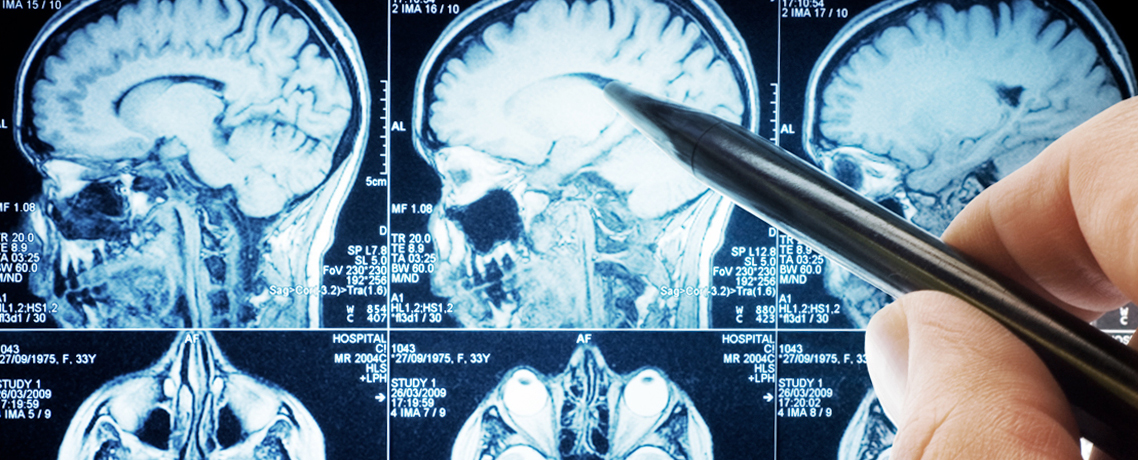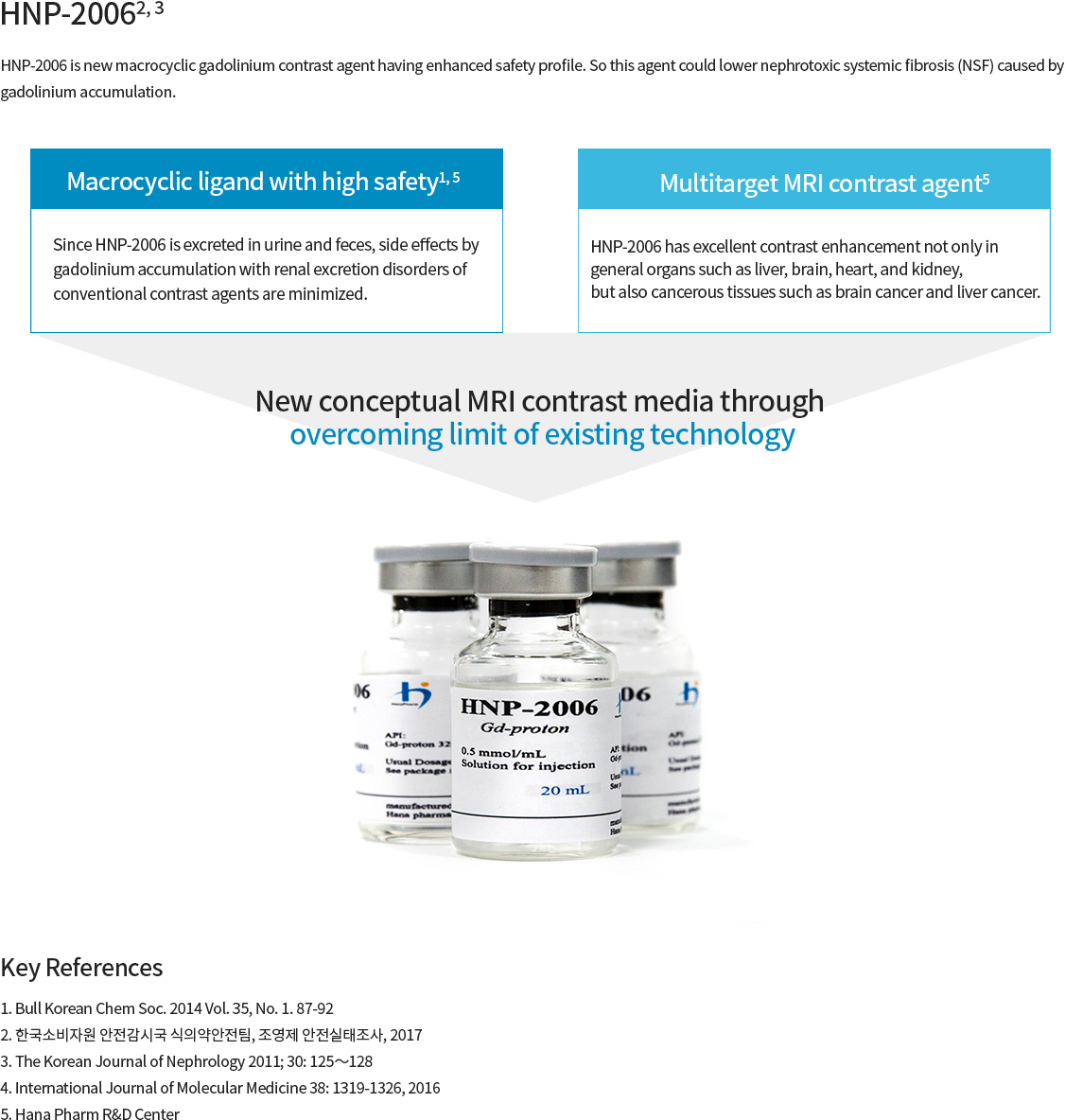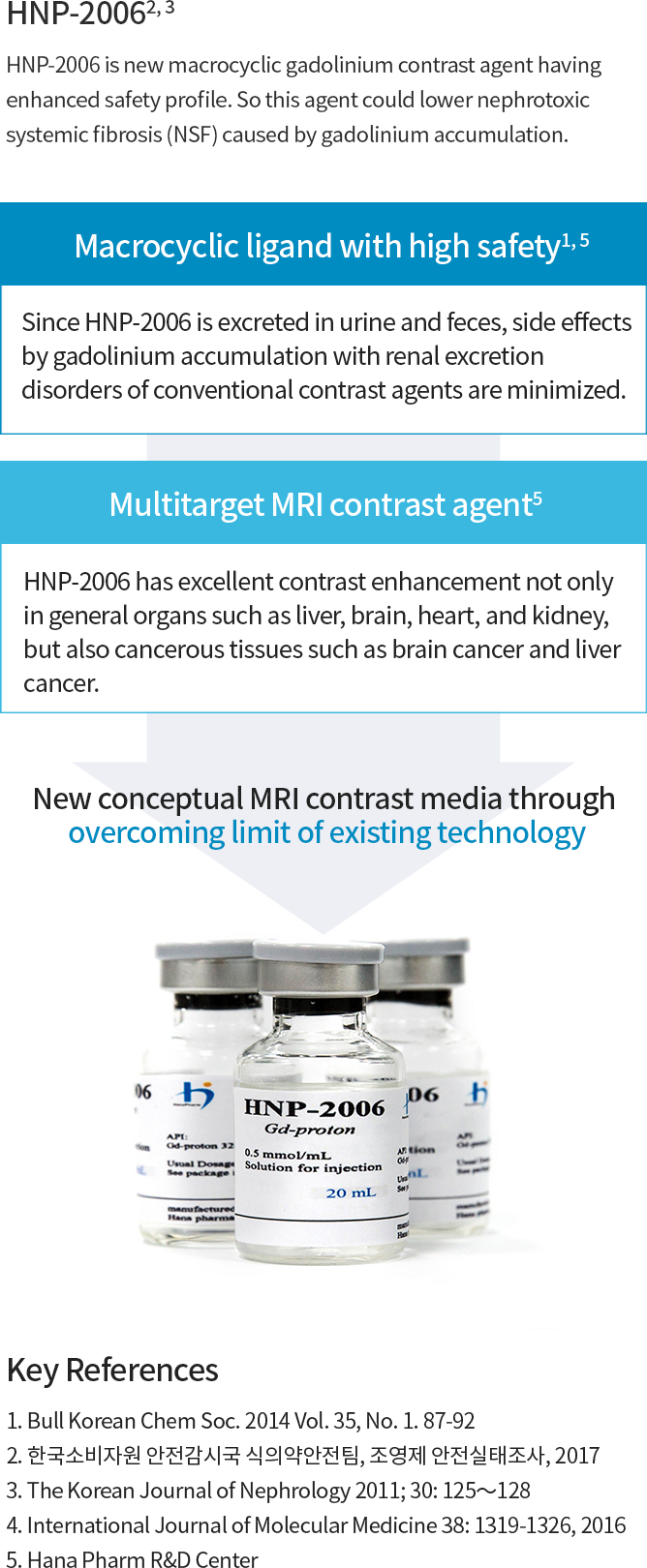Last updated --
Safe MRI contrast media
that overcomes the limitations
of conventional contrast media1

Gadolinium (Gd) is a typical paramagnetic material used in MRI contrast media. When administered in the human body, it increases the MRI signal intensity by binding to water present in the body`s organ tissues and increases the relaxation rate of their hydrogen atom T1 (longitudinal magnetization). Each tissue will acquire images by differences in contrast due to different water content.


Best-in-class multi-functional MRI contrast media with enhanced safetyHNP - 2006
Sources : IMS Health Data 2016